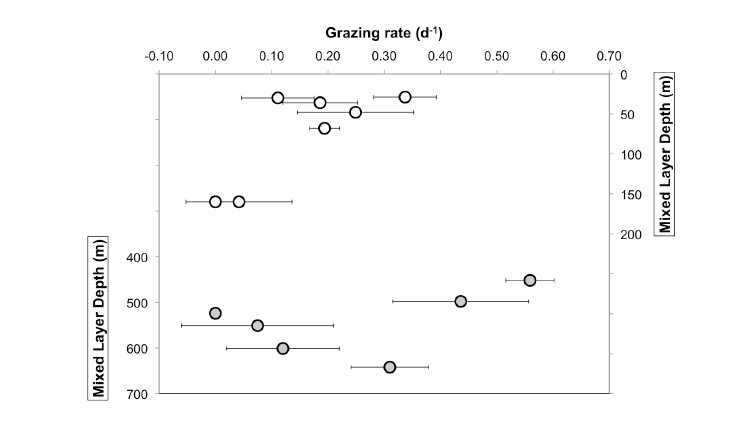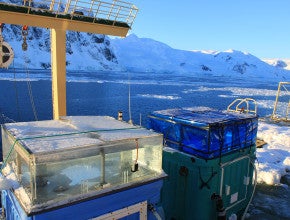The goal of this research is to develop a mechanistic understanding and predictive capability of the relative importance of biological versus physical processes in driving the magnitude of predation pressure by heterotrophic protists (< 200 µm) on microphytoplankton. Recent work has focused on separating the relative role of temperature and potential prey species composition in bloom formation, particularly in polar and sub-polar regions.
Combining incubations and manipulative experiments, we measured grazing rates at home in Narragansett Bay, Greenland (Disko Bay, with Torkel Gissel Nielsen Danish Technical University), abroad the R/V Meteor (North Atlantic within the Eurobasin Project Chief scientists Backhaus and Christansen U Hamburg) and the R/V Palmer (Western Antarctic Peninsula within our krill project with Durbin, Rynearson, Roman and Zhou (UMass Boston)).
This work allows us to measure rates that are only poorly known, but important for predictive modeling studies that need to parameterize grazing, the single most important loss factor of phytoplankton production and biomass. Furthermore, we can make assessments about the relative importance of multiple factors in driving grazing pressure, including predator and prey abundance and species composition, as well as environmental factors, including temperature. To probe deeper into the molecular underpinnings of the feeding process, we are collaborating with Tatiana Rynearson on assembling transcriptomes revealing predation specific conditions, to ultimately provide genetic markers for the feeding process.
Associated Publications
Morison & Menden-Deuer 2015, Menden-Deuer 2012, 2008, Menden-Deuer & Fredrickson 2010, Lawrence & Menden-Deuer 2012, Menden-Deuer et al. 2010.


